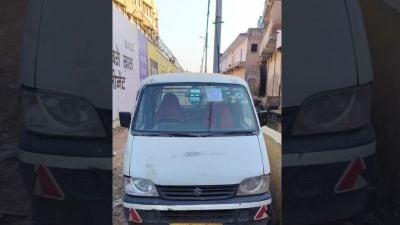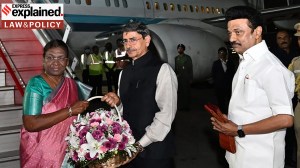Cost of moving a kilo of grain in Arunachal: Rs 4 to Rs 33 in 3 yrs
The Food Corporation of India (FCI) has paid Rs 170 crore as ‘‘excess reimbursement’’ to the Arunachal Pradesh governmen...

The Food Corporation of India (FCI) has paid Rs 170 crore as ‘‘excess reimbursement’’ to the Arunachal Pradesh government in just one year, against transportation subsidy for rice. The Union Food Ministry has finally ordered a special audit; indications are the scandal could run to even seven or eight years.
The scandal is simple enough. As per rules framed in 1995, under the ‘‘hill transport subsidy’’ (HTS) scheme, FCI reimburses transport costs to Arunachal Pradesh for taking foodgrain from eight FCI base depots to 13 designated principal distribution centres (PDCs).
The road length per square kilometre in Arunachal Pradesh is lower than the national average, though the length of motorable roads has been increasing over the years. Four PDCs can’t be reached by trucks. Thus foodgrain is taken here by headload. This is more expensive than a truck journey and adds to the subsidy.
As such, as the length of motorable roads increases, the FCI subsidy should fall. In reality, it has ended up rising. FCI paid Rs 24.27 crore as HTS in 2001-02, Rs 75.03 crore in 2002-03, Rs 279.64 crore in 2003-04.
When translated into per kg of foodgrain, the HTS went up from Rs 4.73 per kg in 2001-02 to Rs 28.23 per kg in 2003-04.
|
HOW IT HAPPENED
|
|||||
|
• Centre allows Hill Transport Subsidy to hill states |
|||||
Consider the foodgrain moved. In 2001-02, the quantity supplied to Arunachal Pradesh was 54,765 metric tons. It rose to 56,457 metric tons in 2002-03. But the HTS went up three times, from Rs 24.27 crore to Rs 75.03 crore. When the foodgrain basket went up to 85,272 metric tons in 2003-04, the HTS shot up to Rs 279.64 crore — roughly, four times as expensive to distribute two times the foodgrain.
C.C. Singpho, state minister for civil supplies, had the same portfolio in the BJP-backed government headed by Gegong Apang that ruled from August 2003 to October 2004. After Apang switched to the Congress and swept the elections, Singpho was entrusted with two important departments, one being civil supplies.
‘‘It is true that there have been irregularities,’’ Singpho told The Indian Express, ‘‘that is why we have stopped the system of headload carriage since July last year. Our government has also made it mandatory to carry out strict scrutiny before making payment of bills to contractors.’’
Under the public distribution system (PDS), FCI transports foodgrain from across the country to its base depots at eight locations in Arunachal Pradesh. From here, state government-approved contractors truck it to 13 PDCs. For four otherwise inaccessible PDCs — Damin (Lower Subansiri), Limeking (Upper Subansiri), Mechuka (West Siang) and Vijaynagar (Changlang district) — the headload carriage system is used.
The government of Arunachal Pradesh is reimbursed for the money it spends in taking the foodgrain from base depots to PDCs. This payment, the HTS, is made by the Union government through FCI. The state government then pays its contractors. The cosy nexus can be imagined. It draws its strength from a vague sentence in a Food Ministry order of 1995: ‘‘It has been decided that reimbursement of hill transportation subsidy will be allowed to the state of Arunachal Pradesh even in such cases where the foodgrains are off-loaded at distribution centres…other than the PDCs or en route to PDCs.’’
Certain conditions were attached to this relaxation. FCI regional authorities Guwahati conveniently ignored them. As the subsidy bills mounted, Delhi woke up. An audit team is now examining HTS bills cleared by the Guwahati regional HQ.
FCI is now speaking of ‘‘adjusting’’ the excess payments against pending and future bills. An internal order of April 4 says: ‘‘Responsibility would be fixed on the officers responsible for the excess payments and disciplinary action initiated.’’
FCI SCANDAL PART II
FCI SCANDAL PART III
FCI SCANDAL PART IV
Photos


- 01
- 02
- 03
- 04
- 05





























